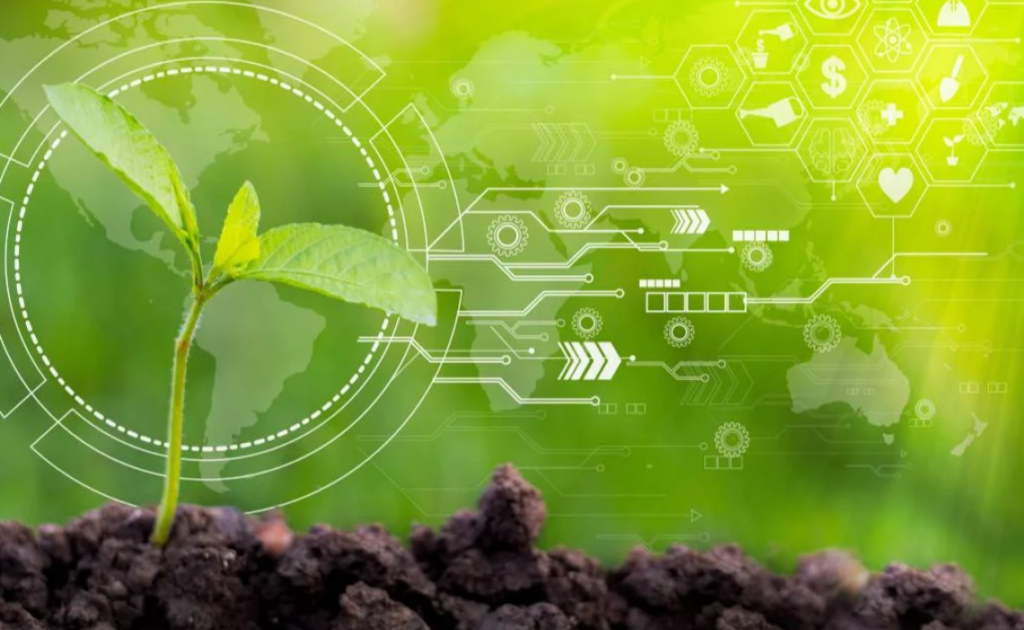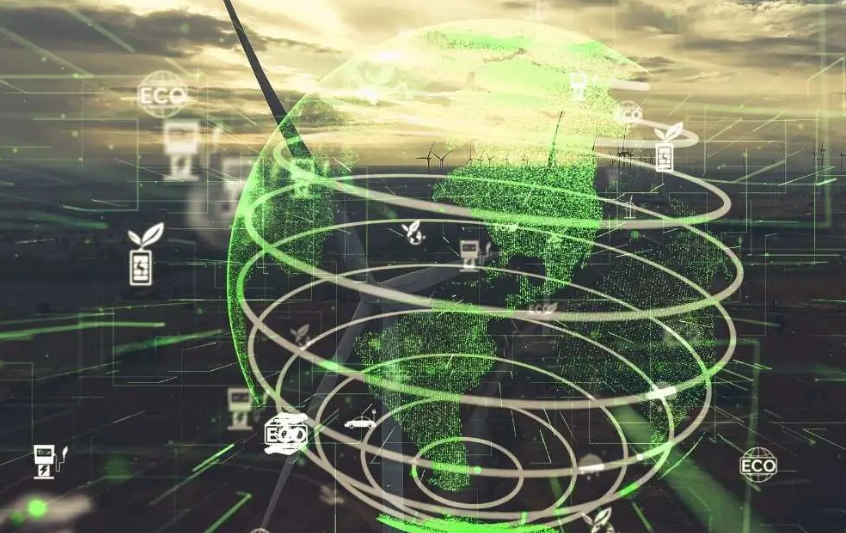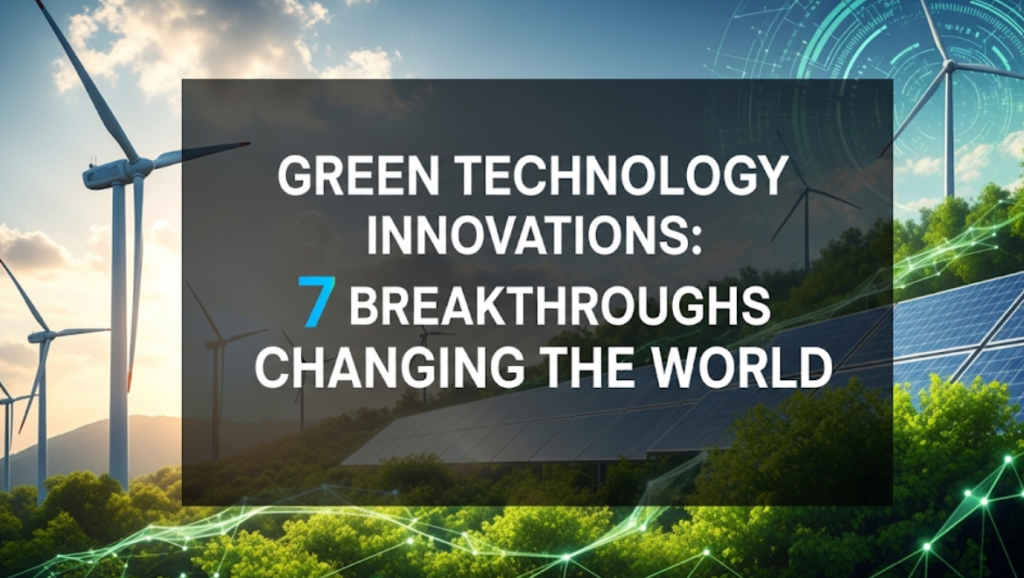The Wave of Revolutionary Eco-Friendly Solutions
Innovations in green technology are changing the way we live, work, and communicate with our earth. These innovative solutions promise a better tomorrow and also provide new business and community opportunities across the globe.
The environment in our world is a great challenge. Our lifestyle is under threat due to climate change, pollution and resource depletion. However, creative intellects are coming up with fantastic technologies that can assist in curbing these issues.
Green tech is ubiquitous, whether it comes in the form of solar panels that light up an entire city, or electric cars that generate no pollution whatsoever. Such solutions not only benefit the environment. They also generate employment, save money and make our lives better.
What Makes Technology “Green”?
Green technology is considered to be any innovation that assists in protecting the environment. These technologies minimize waste, reduce pollution and utilize resources more effectively.
The most optimal green technologies have more than one usage. They address environmental issues, and they are economical. This two-facet strategy endears them to businesses and governments.
The major attributes of green technology are:
- Reduced carbon emissions
- Lower energy consumption
- Minimal waste production
- Use of renewable resources
- Long-term sustainability
Solar Power Revolution: Harnessing the Power of the Sun
One of the most successful green technology innovations over the last few years can be seen through solar technology. There are more efficient and cheaper solar panels than ever.
How Solar Technology Works
Photovoltaic cells convert sunlight to electricity using solar panels. These cells harness solar energy and convert it to power that is used in our homes and businesses.
It is nonpolluting and without noise. Solar panels installed demand little maintenance after installation and last decades to generate electricity.
Latest Solar Innovations
Researchers have created other varieties of solar cells which perform more efficiently under other circumstances. Perovskite solar cells will be able to absorb more sunlight and even operate during cloudy days.
Another burning trend is floating solar farms. These facilities are built in bodies of water thereby conserving precious land space.
| Types of Solar Technologies | Efficiency Rate | Ideal Application |
|---|---|---|
| Conventional Silicon | 15-22% | House tops |
| Perovskite Cells | 25-30% | Commercial buildings |
| Floating Solar | 10-15% | Water reservoirs |
| Concentrated Solar | 35-40% | Large power plants |
Economic Implications of Solar Energy
Solar power generates employment in production, installation and repair. Millions of people work in the industry throughout the world, and it is rapidly expanding.
Cost savings are also considerable. Homeowners who possess solar panels can have their electricity bills reduced to zero. Others go so far as to sell surplus power back to the grid.
Advancement in Wind Power: Harnessing the Power of Nature
Another pillar in green technology innovations is wind energy. New wind turbines are stronger and better functioning than the older ones.
Offshore Wind Farms
Offshore wind farms have higher and more consistent winds as compared to installations on land. These giant installations can serve millions of houses and remain invisible from land.
New floating wind platforms enable them to be installed in deeper areas. This technology creates huge spaces in the ocean where clean energy can be generated.
Vertical Axis Wind Turbines
Conventional wind turbines need specific wind directions in order to be effective. Vertical axis turbines are suitable in urban areas because they can capture wind from any direction.
These compact installations are effective on buildings and in congested areas. They create less noise and cause fewer dangers to birds.
EV Revolution: Clean Transportation Solutions
EVs are one of the significant changes in transportation technology. These green technology inventions are substituting gas-powered cars with clean and efficient vehicles.
Advancements in Battery Technology
In addition, modern EV batteries have a longer life and charge quicker than older ones. Lithium-ion batteries have now been able to give cars a range of more than 300 miles with just one charge.
Even better performance is assured in solid-state batteries. These new batteries not only charge in minutes instead of hours but are also much longer lasting.
Charging Infrastructure
High-speed charging points are emerging all around. Some can provide a 200 mile range which can be charged within 15 minutes.
There is also wireless charging technology that is coming up. In the future, electric vehicles may be able to charge when parked on special pads or even when passing through roads with the equipment.
Environmental Advantages of Electric Vehicles
Direct emissions of electric cars are zero. They produce significantly less pollution (even when accounting for electricity production) than gas cars.
Electric vehicles get even more eco-friendly as the power grid becomes cleaner. EVs are really green when they use solar and wind energy.
Smart Grid Technology: Intelligent Energy Distribution
Smart grids are highly advanced innovations in green technology that ensure efficiency and reliability of our electricity systems. As artificial intelligence continues to revolutionize various sectors, smart grids represent one of the most promising applications of AI in sustainable energy management.
How Smart Grids Work
Smart grids are digital energy management and control systems. They will be able to automatically re-route power in case of an outage and balance supply and demand.
These systems will interface with appliances, solar panels and electric cars. This coordination ensures energy is used optimally.
Smart Grid System Advantages
Smart grids eliminate wastage of energy by balancing production and consumption. They also have a better way of integrating renewable energy sources.
Customers are able to monitor their energy consumption. This fact can make people smarter about their decisions regarding when to use electricity.
| Smart Grid Feature | Traditional Grid | Smart Grid |
|---|---|---|
| Outage Detection | Manual reporting | Automatic |
| Energy Efficiency | 65-70% | 85-90% |
| Renewable Integration | Limited | Seamless |
| Consumer Control | Minimal | Full visibility |
Carbon Capture Solutions: Removing Carbon Dioxide from the Atmosphere
Climate change directly concerns carbon capture technology because it purifies the air of greenhouse gases or eliminates their emissions.
Direct Air Capture Systems
These machines extract CO2 directly out of the air through special filters. The carbon obtained can be buried underground or utilized to produce useful products.
A number of companies currently have large-scale direct air capture plants. Thousands of tons of CO2 can be eliminated with these installations each year.
Industrial Carbon Capture
Power plants and factories may install mechanisms to trap CO2 prior to its release into the atmosphere. This technology helps avoid millions of tons of emissions every year.
There are numerous applications of captured carbon. It may make concrete stronger or develop synthetic fuel or assist in cultivation of plants in greenhouses.
Ocean-Based Carbon Removal
The alkalinization of oceans introduces minerals to seawater which are natural CO2 absorbers. It is similar to the way natural weathering occurs; the process is simply much quicker.
Kelp farming also cleanses carbon as well as producing valuable products. These underwater forests multiply at high rates and they absorb huge quantities of carbon.

Sustainable Construction Innovation: Green Building Materials
A big part of global emissions is in construction. Sustainable building materials provide alternatives to conventional construction in the form of green building materials.
Bio-Based Building Materials
Biological waste is used to create powerful building materials by scientists. Mushroom-based insulation is insulation that can be recycled and is fully biodegradable.
Bamboo is a very fast growing plant and a good material to build with. It is stronger than other conventional woods and it absorbs carbon during its growth.
Recycled Construction Materials
Plastic could be used to create building blocks that are durable through recycling. These materials are impervious to water, insects and weather compared to conventional materials.
Recycled metals (steel and aluminum) use significantly less energy to manufacture than fresh metals. Recycling of materials saves energy and thereby waste is reduced.
Self-Healing Concrete
New concrete formulations can repair their cracks with special bacteria or capsules themselves. This technology prolongs the life of buildings, as well as lessening maintenance.
Smart concrete can also produce electricity by way of variations in pressure or temperature. This invention makes buildings energy producers.
Water Treatment: Clean Water Everywhere
The purification of water provides drinking and agricultural water of high quality. These green technology advances benefit communities all over the world.
Solar Water Purification
Electricity and chemicals are not required to purify water using solar-powered systems. They harness the power of the sun to heat water and destroy dangerous bacteria and viruses.
These systems can be used in isolated regions where power grids are non-existent. They supply clean water at a very low cost over long periods.
Atmospheric Water Generation
Machines have the ability to extract clean water from air humidity. These systems are efficient even in arid weather conditions, and consume little power.
Solar-driven water generators offer complete off-grid water solutions. They are ideal in the event of disasters and for isolated communities.
Improvements in Membrane Technology
Even the smallest pollutants in water are eliminated with new filtration membranes. They are more efficient and longer-lasting than conventional filters.
Graphene-based membranes filter water at extremely high speeds and remove salt and pollutants. With this type of technology, seawater can be made drinkable cheaply.
Green Technology Innovations Impact on the Economy
Green technologies open up industries and create employment. Millions are already being employed in the clean energy sector around the world.
Creating Jobs in Green Industries
Solar installation, wind turbine maintenance and EV production offer secure well-compensated positions. These jobs tend to be technical, not college oriented.
Green building construction, sustainable farming and environmental consultation also generate jobs. Green jobs are diverse and give varying people opportunities.
Business and Consumer Cost Savings
A lot of green technology saves money in the long run even though it is more expensive initially. Solar panels, energy-efficient appliances and electric cars will lower recurring costs.
Companies that go green tend to increase their efficiency, and reduce business expenses. These savings are used to cover the cost of new equipment.
Investment and Market Growth
The amount of money invested in green technology is in the billions every year. Sustainable innovations offer promising returns that are identified by governments and individual business organizations.
The global green technology market has been rapidly growing. According to the International Energy Agency, analysts expect it to keep expanding because environmental concerns are rising and technology prices are declining.
Government Support and Policy Change
The governments of different countries are encouraging green technology development under different incentives and regulations.
Tax Credits and Subsidies
Solar panels, electric vehicles, or installation of energy-efficient equipment are all tax credit options in many countries. These incentives bring green technology to a lower cost.
Grants are used to fund research to develop new green technologies. Innovators with government assistance transform their ideas into commercial products.
Regulatory Requirements
Energy efficient designs and materials are increasingly required in building codes. Emission standards on vehicles drive automakers toward electric vehicles.
Utilities must use renewable energy sources as stipulated by renewable energy mandates. These laws provide assured markets to green technologies.
Obstacles to Green Technology Adoption
Although green technology innovations have advantages, there are some challenges to their adoption.
Initial Cost Barriers
A lot of green technologies are very expensive to invest in initially. Installing solar panels, purchasing electric vehicles, and building improvements can be costly.
Finance alternatives assist in removing cost obstacles. Green technology is made more affordable through leasing programs, low-interest loans and power purchase agreements.
Infrastructure Limitations
Adopting electric vehicles will need a lot of charging infrastructure. Smart grids require substantial expansions of current electrical systems.
The problem of grid integration impacts the implementation of renewable energy. Storage systems and transmission lines must be increased to accommodate varying sources of power.
Technical Challenges
Renewable power faces a major challenge in energy storage. Battery technology is still developing and has limitations.
Solar and wind power suffer intermittency problems. These issues are addressed with the help of backup systems and grid flexibility.
Future Trends in Green Technology
There are emerging trends that suggest even more innovative green technology solutions in upcoming years.
Implementation of Artificial Intelligence
AI is efficient in optimizing green technology by predicting energy demand, weather, as well as system maintenance needs. Machine learning enhances efficiency in all green technology applications.
Intelligent algorithms control renewable energy networks, organize the charging of electric vehicles, and optimize building energy use.
Nanotechnology Applications
Nanomaterials enhance solar panel efficiency, battery performance, and water filtration systems. These small inventions make significant advances in the effectiveness of green technology.
Self-assembling materials have the potential to transform construction and manufacturing. They consume less energy and generate less waste when compared to conventional production methods.
Biotechnology Solutions
Genetically modified organisms have the ability to generate clean fuels, recycle pollutants, and generate sustainable materials. Biotechnology provides biological solutions to environmental issues.
Plant-based plastics, algae-based fuels, bacterial concrete healing, and more are emerging uses of green biotechnology.
Global Success Stories
The implementation of green technology innovations is shown to be successful in countries and companies all over the world.
Wind Power Leadership in Denmark
More than half of the electricity produced in Denmark comes through wind power. The nation sells wind technology and know-how to other countries as well as ensuring energy security.
Danish companies are at the forefront of wind turbine and offshore wind development. This specialization generates employment and foreign exchange.
Renewable Energy Achievement in Costa Rica
Costa Rica is close to being totally powered by hydroelectric energy, wind energy and solar energy. The nation demonstrates how small states can become energy independent.
With this success comes the attraction of eco-tourism and foreign investment. Costa Rica is another example of how environmental leadership brings economic gains.
Smart City Innovations in Singapore
Singapore uses various green technologies to create a comprehensive smart city. Green buildings, smart grids, water recycling and solar power work hand in hand.
The city-state model demonstrates how cities can be made more sustainable with the integration of green technology.
Ways People Can Help Promote Green Technology Innovations
Green technology adoption and development depends on individual actions.
Smart Shopping
Purchasing electric cars, solar panels, and selecting appliances that use less energy are all helpful in supporting green technology markets. Innovation is motivated by consumer demand and lowers costs.
Favoring companies that have good environmental policies will also promote business investment in green technology.
Energy Conservation Practices
Using less energy makes renewable sources more efficient. Simple modifications such as LED lighting, proper insulation, and smart thermostats make a difference.
Conservation will increase the range of electric cars and reduce the solar power systems required in homes.
Advocacy and Education
Sharing information on the benefits of green technology enables others to make sound choices. Community dialogue creates pro-green momentum.
Contacting elected officials can impact governmental support and funding of green technology.

Frequently Asked Questions
What are the most promising green technology innovations today?
Solar energy, EVs, and battery storage are the most promising in the short term. Such technologies are affordable and are resolving significant environmental issues.
How much can green technology save consumers?
Solar panels have the ability to eliminate electricity bills. Thousands of dollars in fuel and maintenance are saved with electric vehicles. Energy-saving devices reduce power consumption by 20-30%.
Are green technologies reliable for mass adoption?
Green technologies in the modern world are very reliable. Solar panels have a life span of 25+ years and require minimal maintenance. Electric cars do not need as much maintenance as gas cars.
What jobs are available in the green technology industry?
Green technology has provided employment opportunities in manufacturing, installation, maintenance, engineering and sales. Technical training is preferred over college education in many job positions.
What impact do green technology innovations have on the economy?
Green technologies create new jobs, industries, and lower energy costs. They make countries more attractive and energy independent.
Can green technology resolve climate change?
Green technology plays a vital role in dealing with climate change. Along with conservation measures and policy modifications, such innovations can greatly reduce greenhouse gas emissions.
What are the greatest challenges to green technology adoption?
Initial costs, infrastructure constraints and technical hurdles delay adoption. But costs are reducing and performance is improving.
How can developing countries access green technology?
Basic infrastructure can be delivered through green technologies such as water purification and solar power. They provide development leapfrog opportunities.
Creating a Sustainable Future Together
Green technology innovations not only provide actual solutions to environmental problems, but also generate economic prospects. These innovations confirm that we can not only save our planet but also sustain modern life.
The technologies mentioned here are only part of a green revolution. Solar energy, wind power, electric cars, smart grids, carbon capture, green materials and water purification are transforming our relationship with the environment.
Governments, businesses, and individuals need to collaborate in order to achieve success. Green technology development is critical to policy support, investment funding, and consumer adoption.
Green technology innovations have a bright future. Costs keep declining as performance increases. Every day new breakthroughs are made and even better solutions are proposed for environmental issues.
We are at a junction of technology and environmental protection. Green innovations offer a way to a sustainable future, which will benefit all. Today, supporting these technologies helps us invest in a cleaner and healthier future for generations.
The time for action is now. Each solar panel installed, every electric car sold and every green building constructed brings us one step closer to a sustainable future. We can harness the potential of green technology innovations to make a difference for our planet.

